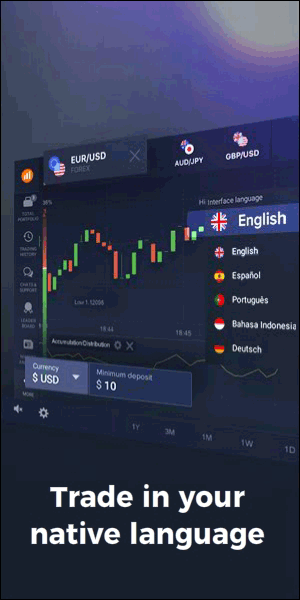Understanding the Core Differences Between Bitcoin and NFTs
The world of digital assets has grown exponentially over the past decade, introducing various forms of cryptocurrencies and digital tokens. Among these, Bitcoin and Non-Fungible Tokens (NFTs) have garnered significant attention. While both are part of the blockchain ecosystem, they serve very different purposes and possess unique characteristics. This article delves into the main differences between Bitcoin and NFTs, providing a comprehensive understanding of each.
Introduction to Bitcoin
Bitcoin, often referred to as BTC, is the first and most well-known cryptocurrency. Created by an anonymous person or group of people using the pseudonym Satoshi Nakamoto, Bitcoin was introduced in a 2008 whitepaper titled “Bitcoin: A Peer-to-Peer Electronic Cash System.”
What is Bitcoin?
Bitcoin is a decentralized digital currency that operates without a central authority or single administrator. It can be sent from user to user on the peer-to-peer Bitcoin network without the need for intermediaries.
- Decentralization: Bitcoin operates on a decentralized network, meaning no single entity controls it.
- Blockchain Technology: Transactions are recorded on a public ledger called the blockchain.
- Limited Supply: There will only ever be 21 million Bitcoins in existence.
How Does Bitcoin Work?
Bitcoin transactions are verified by network nodes through cryptography and recorded in a public distributed ledger called a blockchain. Here’s a simplified breakdown of how it works:
- Mining: Miners use powerful computers to solve complex mathematical problems that validate transactions and add them to the blockchain.
- Wallets: Users store their Bitcoins in digital wallets, which can be software-based or hardware-based.
- Transactions: When a user wants to send Bitcoin to another user, they create a transaction that is broadcasted to the network and verified by miners.
Introduction to NFTs
NFTs, or Non-Fungible Tokens, represent ownership of unique items or pieces of content on the blockchain. Unlike cryptocurrencies like Bitcoin, which are fungible (each unit is identical and can be exchanged one-for-one), NFTs are unique and cannot be exchanged on a one-for-one basis.
What are NFTs?
NFTs are digital assets that represent ownership or proof of authenticity of unique items such as art, music, videos, virtual real estate, and more. They are created using blockchain technology, typically on Ethereum’s blockchain using ERC-721 or ERC-1155 standards.
- Uniqueness: Each NFT has distinct information or metadata that makes it unique.
- Indivisibility: NFTs cannot be divided into smaller units; they exist as whole items.
- Ownership Proof: Ownership of an NFT is recorded on the blockchain, providing verifiable proof of authenticity and ownership.
How Do NFTs Work?
NFTs function through smart contracts—self-executing contracts with the terms directly written into code—that govern their creation and transfer. Here’s how they generally work:
- Minting: Creating an NFT involves minting it on a blockchain platform like Ethereum. This process includes creating metadata that describes the asset.
- Marketplace: NFTs can be bought, sold, or traded on various online marketplaces such as OpenSea, Rarible, and Foundation.
- Ownership Transfer: When an NFT is sold or transferred, the ownership record is updated on the blockchain.

Main Differences Between Bitcoin and NFTs
1. Definition and Purpose
Bitcoin: The Pioneer Cryptocurrency
Bitcoin is a decentralized digital currency introduced in 2008 by an anonymous person or group known as Satoshi Nakamoto. It was designed to function as a peer-to-peer electronic cash system, allowing users to transfer value without the need for intermediaries like banks or payment processors.
- Purpose: Primarily used as a digital currency and store of value.
- Supply: Limited to 21 million bitcoins.
NFTs: Unique Digital Assets
Non-Fungible Tokens (NFTs) are digital assets that represent ownership or proof of authenticity of a unique item or piece of content, stored on a blockchain. Unlike cryptocurrencies such as Bitcoin, which are fungible and can be exchanged on a one-to-one basis, NFTs are unique and cannot be exchanged on a like-for-like basis.
- Purpose: Used to represent ownership of digital or physical items, such as art, music, videos, and virtual real estate.
- Supply: Each NFT is unique, with its own distinct value.
2. Technological Foundations
Bitcoin: Blockchain and Proof of Work
Bitcoin operates on its own blockchain, utilizing a Proof of Work (PoW) consensus mechanism to validate transactions and secure the network.
- Blockchain: Bitcoin Blockchain.
- Consensus Mechanism: Proof of Work (PoW).
- Transaction Speed: Relatively slow, with an average block time of 10 minutes.
NFTs: Ethereum and Beyond
While NFTs can be created on various blockchains, the majority are currently built on the Ethereum blockchain, using the ERC-721 and ERC-1155 standards. Ethereum’s smart contract functionality enables the creation and management of NFTs.
- Blockchain: Primarily Ethereum, but also other blockchains like Binance Smart Chain, Flow, and Polygon.
- Consensus Mechanism: Ethereum is transitioning from Proof of Work (PoW) to Proof of Stake (PoS) with Ethereum 2.0.
- Transaction Speed: Faster than Bitcoin, but still dependent on network congestion.
3. Fungibility and Interchangeability
Bitcoin: Fungible Asset
Bitcoin is fungible, meaning each bitcoin is identical in value and can be exchanged for another bitcoin without any loss of value. This fungibility makes it suitable for use as a medium of exchange.
- Example: 1 BTC is always equal to 1 BTC, regardless of its transaction history.
NFTs: Non-Fungible Assets
NFTs are non-fungible, meaning each token is unique and cannot be exchanged on a one-to-one basis with another NFT. The uniqueness of NFTs makes them ideal for representing ownership of distinct items.
- Example: An NFT representing a piece of digital art by a famous artist cannot be exchanged for an NFT representing a different piece of digital art, as each has its own value and attributes.
4. Use Cases and Applications
Bitcoin: Digital Currency and Store of Value
Bitcoin’s primary use cases include being a digital currency for transactions and a store of value, often compared to digital gold. It is also used for remittances and as a hedge against inflation.
- Key Applications:
- Peer-to-peer transactions.
- Investment and speculation.
- Remittances and cross-border payments.
NFTs: Digital Collectibles and Beyond
NFTs have a wide range of applications, primarily in the realm of digital collectibles, art, and virtual assets. They are also being explored for use in real estate, gaming, and intellectual property.
- Key Applications:
- Digital art and collectibles.
- Virtual real estate and gaming assets.
- Music and media ownership.
- Proof of authenticity and provenance.
5. Market Dynamics and Valuation
Bitcoin: Market Capitalization and Trading
Bitcoin is the largest cryptocurrency by market capitalization and is traded on numerous exchanges worldwide. Its value is influenced by factors such as supply and demand, market sentiment, and macroeconomic trends.
- Market Capitalization: Often exceeds hundreds of billions of dollars.
- Trading Volume: High liquidity and daily trading volume.
NFTs: Valuation and Marketplaces
NFTs are typically traded on specialized marketplaces like OpenSea, Rarible, and Foundation. Their value is highly subjective, influenced by factors such as rarity, creator reputation, and cultural significance.
- Market Capitalization: Varies widely depending on individual NFTs and collections.
- Trading Volume: Lower liquidity compared to Bitcoin, with sales occurring on specific platforms.
Conclusion
While Bitcoin and NFTs both leverage blockchain technology, their purposes, characteristics, and applications are fundamentally different. Bitcoin is a fungible digital currency designed for peer-to-peer transactions and value storage, whereas NFTs are unique digital assets representing ownership and authenticity of various items. Understanding these differences is crucial for navigating the evolving landscape of digital assets.







